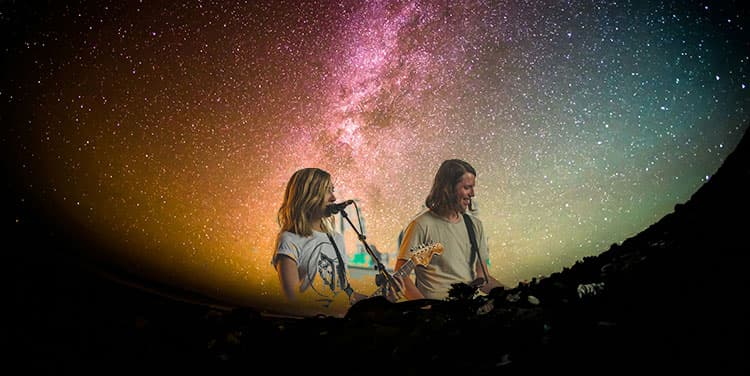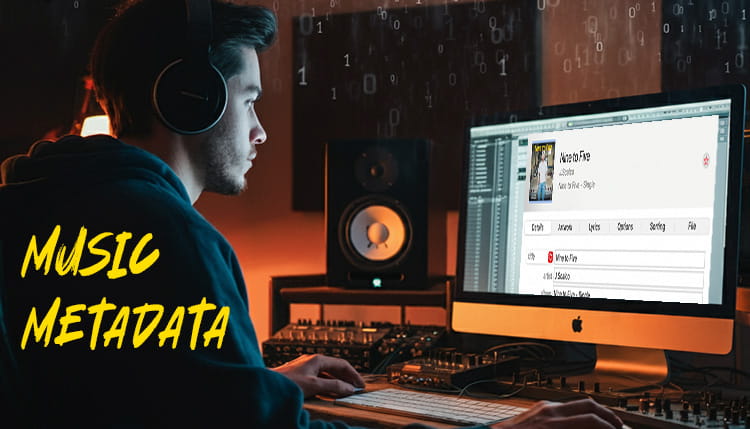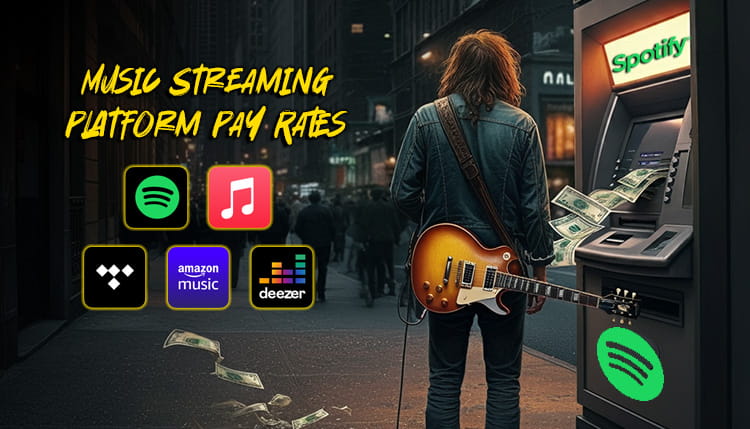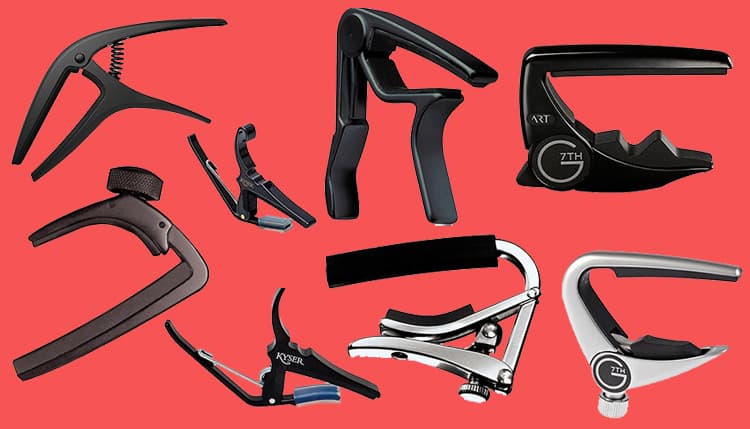The world of music videos has come a long way since MTV first hit our screens.
Today, special effects reign supreme, transforming simple performances into mind-bending visual feasts.
In this article, we’ll explore the exciting realm of music video special effects, uncovering the latest trends, techniques, and tools that are shaping the industry in 2024.
Get ready to be inspired and amazed by the magic happening behind the scenes!
The Evolution of Music Video Special Effects
Man, I feel like I’ve been around the block when it comes to music video special effects.
I remember using VHS tapes to showcase the “cutting-edge” effects of the time. Talk about ancient history!
The journey of special effects in music videos has been a wild ride.
Back in the day, we had to rely on practical effects and camera tricks to create anything remotely interesting.
I once tried to recreate the “Take On Me” video effect using nothing but pencils and paper.
Let’s just say it didn’t quite have the same impact!
But then, boom! The digital revolution hit, and suddenly we were in a whole new ballgame.
Technological advancements like CGI and motion capture completely changed the game.
I remember watching the “Black or White” video by Michael Jackson for the first time.
My mind was blown by the morphing effect!
It’s crazy to think that what was once groundbreaking is now considered pretty basic stuff.
Speaking of iconic videos, there are a few that really stand out as game-changers in the world of music video special effects:
- Peter Gabriel’s “Sledgehammer” – Stop-motion animation at its finest!
- Jamiroquai’s “Virtual Insanity” – That moving floor still messes with my head
- Björk’s “All Is Full of Love” – Robot love never looked so good
These videos didn’t just push boundaries; they shattered them.
They showed us what was possible when you combined creativity with new technology.
It’s like they opened up a whole new world of possibilities for artists and directors.
But it wasn’t all smooth sailing. I remember trying green screen techniques using an old bedsheet and some cheap software.
Let’s just say the results were… interesting.
But that’s the beauty of progress, right? We learn from our mistakes and keep pushing forward.
One thing that’s always fascinated me is how music video special effects have evolved alongside music itself.
As genres change and new styles emerge, the visuals have to keep up.
It’s like this constant dance between audio and visual innovation.
A study conducted by MIT revealed that the human brain can recognize and respond to images in just 13 milliseconds.
That’s the power of visual storytelling!
And don’t even get me started on the impact of MTV!
When they first started airing 24/7 music videos, it was like throwing gasoline on the creative fire.
Suddenly, every artist wanted to have the coolest, most innovative video out there.
It was a golden age for effects artists and directors.
But here’s the thing – even with all the fancy tech we have now, sometimes the old-school tricks still work best.
I’ve seen amazing effects using nothing but clever editing and some household objects.
It just goes to show that creativity is still king, no matter how advanced the tools get.
Looking back, it’s incredible to see how far we’ve come.
From simple camera tricks to full-blown virtual worlds, the evolution of music video special effects is a testament to human creativity and innovation.
And the best part? We’re nowhere near done yet!
Current Trends in Music Video Special Effects
Alright, let’s dive into the hot stuff happening right now in music video effects. It’s a crazy time to be alive, I tell ya!
AI Powered Music Video Special Effects
First up, we’ve got AI-powered effects taking the industry by storm.
It’s like having a whole team of VFX artists crammed into your laptop!
I remember when I first tried out some AI video enhancement software – I felt like a kid in a candy store.
Suddenly, I could do things that would’ve taken me weeks in just a few clicks. It’s not all roses though.
Sometimes the AI goes a bit… wonky.
I once tried to use it to add some cool lighting effects to a student project, and it ended up making everyone look like they were auditioning for a sci-fi movie!
VR Music Video Special Effects
Virtual and augmented reality are also making big waves. It’s not just for gamers anymore!
I’ve seen some mind-blowing music videos that let you step right into the artist’s world.
It’s like being at a concert, but you’re in your living room, and you might bump into a virtual elephant.
Don’t ask me how I know that last part.
Practical Music Video Special Effects
But here’s a twist for ya – practical effects are making a comeback!
Yep, good old-fashioned smoke machines, puppets, and clever camera work are cool again.
It’s like fashion – everything comes back around eventually. I
I’ve been trying to mix it up, use both digital and practical effects. The results can be pretty amazing.
Generative AI Music Video Special Effects
One trend that’s really caught my eye is the use of generative AI in creating visual effects.
It’s like having an endless supply of unique, trippy visuals at your fingertips.
I tried using some of these tools and ended up with a video that looked like a psychedelic cat had a dance party in a paint factory.
The kids loved it, though!
Here’s a quick rundown of some current trends I’m seeing:
- Hyper-realistic CGI integrated seamlessly with live action
- Glitch effects and digital distortion (making things look “broken” on purpose)
- Retro-style effects with a modern twist
- Interactive videos that respond to viewer input
One thing I’ve noticed is that there’s a real push towards making effects more accessible.
You don’t need a Hollywood budget to create something spectacular anymore. I’ve seen incredible videos using nothing but their phones and some clever apps.
Authenticity
But with all this tech at our fingertips, there’s also a trend towards authenticity.
Artists are looking for low budget music video ideas that enhance their message and not overshadow it.
It’s a delicate balance, and I’ve seen plenty of videos that get it wrong.
Too many effects can be like too much seasoning – it ruins the dish!
I gotta say, though, my favorite trend is the mashup of old and new techniques.
Seeing a video that combines stop-motion animation with cutting-edge CGI just makes my heart sing.
It’s like the best of both worlds!
One thing’s for sure – the world of music video effects is never boring.
Just when you think you’ve seen it all, someone comes along and blows your mind with something completely new.
It keeps us old-timers on our toes, that’s for sure!
So, what’s next? Who knows! But I can’t wait to find out.
Popular Music Video Special Effects Techniques
Alright, let’s get into the nitty-gritty of some popular special effects techniques you’ll see in music videos these days.
Buckle up, ’cause we’re about to get technical!
Green Screen and Chroma Key
First up, we’ve got green screen and chroma key compositing. This is the bread and butter of many music video effects.
I remember the first time I tried this, I had a green sheet pinned up on the wall, and I was feeling pretty confident.
Cut to an hour later, and I had accidentally made everything invisible!
But when you get it right, oh boy, the possibilities are endless.
You can put your artist on the moon, underwater, or in the middle of a raging inferno – all without leaving the studio.
Motion Capture and CGI
Next, we’ve got motion capture and CGI character animation. This is where things get really wild.
Imagine being able to turn your lead singer into a fire-breathing dragon or a talking sunflower.
I once had an artist who wanted to turn himself into a dancing slice of pizza for his video.
Let’s just say the results were… interesting.
But when done right, this technique can create some truly mind-bending visuals.
Time Manipulation
Time manipulation effects are huge right now.
Slow-motion, time-lapse, bullet time – you name it, someone’s doing it in a music video.
I love playing with these. There’s something magical about seeing a water balloon explode in super slow-mo or watching a whole day pass in seconds.
Just be careful with the slow-mo, though.
I once accidentally left it on during a lip-sync shot, and it looked like the poor kid was trying to sing underwater!
Dynamic Simulations
One technique that never fails to impress is particle systems and dynamic simulations.
This is where you can create realistic-looking fire, water, smoke, or even swarms of creatures.
I remember trying to create a snow effect for a winter-themed video.
Somehow, I ended up with what looked like a dandruff apocalypse.
But when you nail it, the results can be absolutely stunning.
Here’s a quick list of some other popular techniques:
- Rotoscoping (for that cool “animated over live-action” look)
- Morphing (transforming one image into another seamlessly)
- Digital makeup and beauty effects
- Light and lens flares (because who doesn’t love a good JJ Abrams impression?)
One thing I always stress is that these techniques are tools, not crutches.
It’s easy to get carried away and throw every effect you know at a video.
But the best effects are the ones that serve the story or enhance the mood of the song.
I’ve seen some incredible uses of these techniques in recent years.
There was this one video where they used motion capture to turn the entire band into living constellations.
It was like watching the night sky come to life and start jamming!
And don’t even get me started on the videos that use particle systems to create entire worlds out of light or sound waves.
But here’s the thing – you don’t always need the fanciest tech to create something amazing.
I’ve seen students create jaw-dropping effects using nothing but clever editing and some household objects.
It’s all about creativity and thinking outside the box.
Combining Practical and Digital Music Video Special Effects
One trend I’m loving is the combination of practical and digital effects.
Like, you might have a real explosion on set, but then enhance it with CGI particles in post-production.
It gives you that organic feel with a extra punch of wow factor.
At the end of the day, the best special effect is the one that makes the viewer forget they’re watching an effect at all.
It’s about creating a seamless, immersive experience that supports the music and the artist’s vision.
And let me tell you, when you get it right, there’s no better feeling in the world!
Software and Tools for Creating Music Video Special Effects
Alright, let’s talk tools of the trade. When it comes to creating music video special effects, you’ve got options ranging from “Hollywood blockbuster” to “I found this app for free and it’s actually pretty cool!”
Industry Music Video Special Effects Software
First up, we’ve got the industry-standard visual effects software.
We’re talking heavy hitters like Adobe After Effects, Nuke, and Autodesk Maya.
These are the big guns, the software that the pros use to create mind-blowing effects for music videos and movies alike.
I remember the first time I opened After Effects – I thought to my self, no way, I’m never going to get this!
But once I got the hang of it, oh boy, the things you can do are incredible.
Affordable Music Video Special Effects Software
But here’s the thing – not everyone has the budget (or the need) for these powerhouse programs.
That’s where the affordable options come in, and let me tell you, some of these are seriously impressive.
Software like HitFilm Express, DaVinci Resolve, and Blender can give you professional-looking results without breaking the bank.
I’ve seen absolutely stunning effects using these music video editing software suites.
Mobile Apps Special Effects Software
And then we’ve got the mobile video editing apps. Don’t underestimate these little powerhouses!
I once had a friend who forgot her laptop on the day of a big project. She ended up editing their entire music video on her phone, effects and all.
The result? It looked better than half the videos I’ve seen on desktop software!
Here’s a quick rundown of some popular tools:
- Adobe Creative Suite (After Effects, Premiere Pro, Photoshop)
- Blackmagic DaVinci Resolve
- Blender (it’s free and open-source!)
- HitFilm Express
- Filmora
Now, let me tell you about the time I tried using only mobile apps for effects. It was… chaotic, to say the least.
Picture me hunched over my phones, trying to figure out how to make someone look like they’re floating in space.
But you know what? By the end of it, I had a pretty incredible video!
One thing I always try to remember is that the tool doesn’t make the artist.
I’ve seen mind-blowing effects created with the simplest software, and I’ve seen expensive programs used to create absolute disasters.
It’s all about creativity and knowing how to use what you’ve got.
That being said, there’s something to be said for learning the industry-standard tools.
If you’re serious about a career in VFX, you’re gonna need to know your way around After Effects at the very least.
But don’t let that intimidate you! These programs are more accessible than ever, with tons of tutorials and resources available online.
I remember when I first started looking into VFX you had to have one special computer to run After Effects.
Now, with cloud-based solutions and more powerful laptops, anyone can get in on the action. It’s a brave new world, I tell ya!
One trend I’m loving is the rise of AI-powered tools in effects software.
It’s like having a little VFX wizard in your computer, helping you out.
I tried out some AI-powered rotoscoping tools recently, and it was like magic.
What used to take hours now takes minutes!
Pro Tip: Don’t get too caught up in having the latest and greatest software. Focus on mastering the basics, understanding the principles of good design and storytelling.
Because at the end of the day, the best effect is the one that serves the story and enhances the music.
Everything else is just icing on the cake!
The Role of Special Effects in Storytelling
Alright, let’s talk about how special effects can take your music video storytelling to the next level.
This is where the magic really happens, folks!
The Narrative
First things first – special effects aren’t just about making things look cool (although that’s definitely a bonus).
They’re about enhancing the narrative of your video.
I remember working on a project with an artist who wanted to tell a story about feeling trapped in a dead-end job.
We used some simple compositing techniques to make it look like his character was literally shrinking as the video progressed.
By the end, he was the size of a mouse in a giant office. It was simple, but man, did it pack a punch!
Mood and Atmosphere
Creating mood and atmosphere with effects is another huge part of storytelling.
You can use color grading to make a sunny day look gloomy, or add particle effects to create a dreamy, surreal vibe.
I once had a class project where I was working on a breakup song.
I used some digital distortion effects to make it look like the world was literally falling apart around the singer.
It was pretty dramatic, but hey, that’s teenage heartbreak for you!
Balance
One thing I always stress is the importance of balancing effects with the music and performance.
It’s easy to get carried away and end up with a video that looks like a VFX demo reel.
But remember, the star of the show is still the music.
The effects should support and enhance the song, not overshadow it.
Here are some ways special effects can boost your storytelling:
- Visual metaphors (like turning emotions into physical manifestations)
- Time manipulation (showing the passage of time in creative ways)
- Environment creation (building entire worlds that reflect the song’s themes)
- Character transformation (using effects to show internal changes externally)
I once worked on a video where we used particle effects to create a character made entirely of music notes.
As the song progressed, the character became more and more solid, representing the artist finding their voice.
It was a bit on the nose, maybe, but it looked cool and got the point across!
Continuity
Another important aspect is using effects to create continuity in your storytelling.
You can use transitions and effects to seamlessly move between different scenes or time periods.
I had a friend who created a video that told the story of a relationship from first meeting to breakup.
He used some clever morphing effects to transition between scenes, making it feel like one continuous shot. It was pretty mind-bending!
But here’s the thing – sometimes less is more.
I’ve seen videos where a simple effect, used at just the right moment, can have more impact than a whole bunch of flashy visuals.
It’s all about timing and context.
Augmented Reality
One trend I’m loving is the use of augmented reality effects in storytelling.
Imagine watching a music video and being able to interact with the environment, or see different storylines based on where you look.
It’s like choose-your-own-adventure meets music video!
At the end of the day, the best special effects are the ones that make you feel something.
Whether it’s wonder, sadness, excitement, or anything in between, if the effect enhances the emotional impact of the song, then it’s done its job.
So next time you’re planning a music video, think about how special effects can help tell your story.
But remember, they’re a tool, not a crutch. Use them wisely, and you’ll create something truly magical!
Final Thoughts on Music Video Special Effects
As we’ve seen, the world of music video special effects is a thrilling playground of creativity and innovation.
From jaw-dropping CGI to nostalgic practical effects, the possibilities are endless for artists and filmmakers looking to make their mark.
Whether you’re an aspiring videographer or a music fan, understanding these techniques can deepen your appreciation for the art form.
So, the next time you watch a music video, take a moment to marvel at the incredible special effects that bring the artist’s vision to life.
Who knows? You might just be inspired to create some movie magic of your own!











